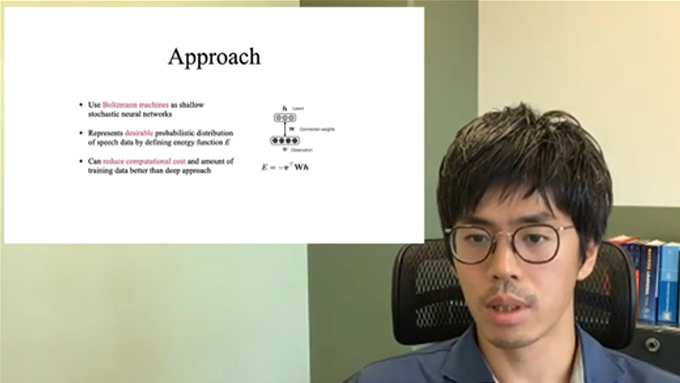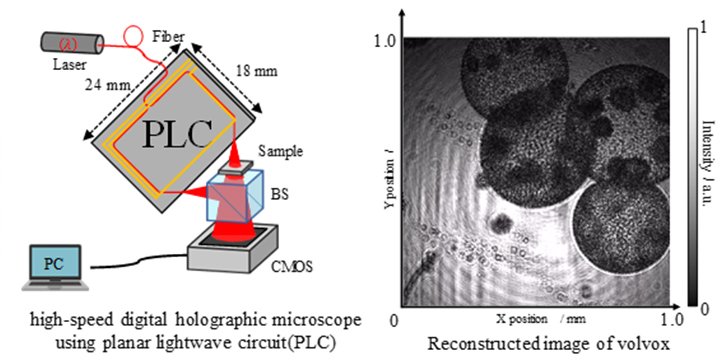Topics - e-Bulletin
University of Electro-Communications publishes the December 2021 issue of UEC e-Bulletin
The December 2021 issue of the UEC e-Bulletin includes a video profile of UEC Associate Professor Toru Nakashika where he describes his recent research on ‘Speech Signal Processing Based on Shallow Neural Networks’.
The Research Highlights are, ‘Frequency analysis helps to understand sleep disorder,' Keiki Takadama ; and ‘Modelling performance assessment,' Masaki Uto.
The Topics is an interview with Eriko Watanabe, Associate Professor at the Department of Engineering Science, who describes her ‘Fascination with digital holograms and their applications for imaging through semi-opaque materials.’
Research Highlights
Sleep science
Frequency analysis helps to understand sleep disorder

Sleep apnea syndrome (SAS) is a sleep disorder characterized by the occurrence of pauses in breathing (apnea) during sleep. Such pauses can typically last for more than 10 seconds and are often followed by loud snoring. The brain interprets each breathing pause as danger — because of the decrease in oxygen supply — and sleep becomes shallow. As a result, a person suffering from SAS builds up a sleep debt, which may in turn lead to mental health issues like depression or dementia. In order to avoid medical complications, early detection of SAS is crucial. So-called non-contact detection methods are based on monitoring chest motion, e.g. by means of a sensor attached to the mattress sensor the person is sleeping on; from the recorded bio-vibration data, breathing frequencies and amplitudes can be derived. This type of method is not always effective. For example, when a person’s breathing is ‘forced’ (breathing accompanied by thoracic and abdomen movement, and in fact also a symptom of SAS), sleep apnea is difficult to detect. Now, Iko Nakari and Keiki Takadama from the University of Electro-Communications have developed a new method for processing overnight bio-vibration data that can detect SAS in a more universal way.
Modelling performance assessment
Getting the most out of quantum systems

Performance assessment of a practical task carried out by an examinee is typically done by human raters awarding scores for different parts of the task. Often, a so-called scoring rubric is used for this purpose, listing the various parts and descriptions of the performance scores associated with them. There are some inherent shortcomings to this procedure, however, including the characteristics of the rubric’s evaluation items and the raters’ behaviour — one rater may score differently than another. Now, Masaki Uto from the University of Electro-Communications has developed a new model that takes into account the specifics of a rubric’s evaluation items and the raters.
Researcher Video Profiles
Toru Nakashika, Associate Professor Department of Computer and Network Engineering Graduate School of Informatics and Engineering University of Electro-Communications, Tokyo

Speech Signal Processing Based on Shallow Neural Networks
Topics
Fascination with digital holograms and their applications for imaging through semi-opaque materials

“My interest in light and optics was triggered when I saw an exhibition on holography at an event on campus during my undergraduate days at university,” says Eriko Watanabe, an associate professor at the Department of Engineering Science, UEC Tokyo. “I was intrigued by the amazing three dimensional optical structures that could be produced by the interference of light waves. This fascination with holograms is the basis for my current research.”

